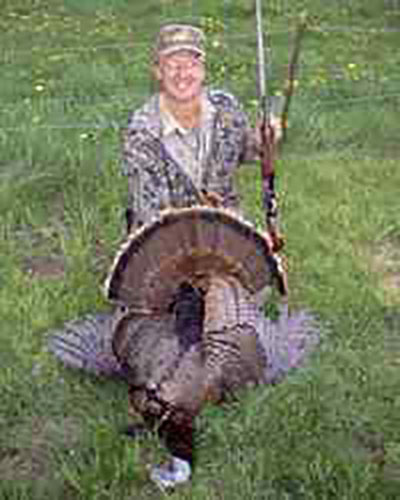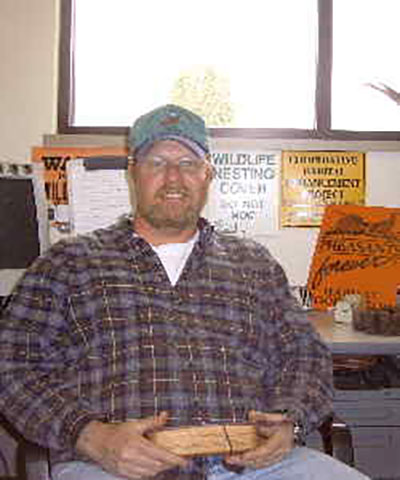Turkey Hunting Tips For Hunting Big Tom Turkeys
Turkey Hunting Tips And Tactics
by jim bennett

The National Wild Turkey Federation puts out a list of states that estimates turkey population and the harvest each spring. Wisconsin is always right up there in the top five as far as the number of birds harvested each spring. This year they are number two only behind Missouri!
The spring turkey hunting tradition in the US just continues to grow and spread into more states and different areas of the states that have had wild turkeys reintroduced. In 1976 Wisconsin was one of those states that had turkey reintroduced as the two DNR’s traded wild turkey from Missouri for ruffed grouse from the Badger State. Today Wisconsin’s turkey population continues to grow in leaps and bounds. Badgerlands turkey hunting population is still experiencing an explosion that hasn’t shown any signs of leveling off since the wild turkey was released into the wild from Missouri so many years ago. It’s a love affair that is attracting many people to take up the sport from around Wisconsin and out of state as well.
Driving down the road you are still seeing gobblers in full strut as they put on their best act to attract a willing hen. Dressed in black, as their feathers have a black tinge to them, the gobbler appears jet black, almost a shiny black, while the hens look more brownish out in the field.
We are heading into the final quarter of the spring gobbler hunt in the Badger State. Wisconsin turkey seasons run consecutively for five day periods since they began back in early April. It spreads out the hunting pressure and makes it like you are the only other hunter in the turkey woods. According to Wisconsin Department of Natural Resources wildlife technician Mike Soergel who not only manages turkeys well, he hunts them successfully. He says right now is one of the best times of year to take a big bad beautiful boasting boss gobbler! Here is what Mike had to say about the best times to hunt wild turkeys!
“I think a lot of folks believe in the misnomer that if you aren’t hunting during the first or second time periods then you are missing out of some of the best hunting for the biggest and oldest gobblers. But I think that nothing can be further from the truth. Turkey hunting is excellent all through the various time periods”
“Theoretically first period is the best and the sixth season, the last period are the best. In the first periods hens are not receptive to the breeding season and avoid the Toms and Jakes. The sixth period the hens are all sitting on the nest and the Toms are now very lonely birds and quite susceptible to hunting.”
Of course weather and the number of turkeys per farm can affect this scenario. That is why Soergel says you have to get out and scout even late in the season to see what the “action” is like on the property you intend to hunt. Are the birds susceptible on the land you intend to hunt? “You have to search these birds out. You need to spend some fuel money, do some leg work and wear out some boot leather and find those birds.

“I think a lot of folks believe in the misnomer that if you aren’t hunting during the first or second time periods then you are missing out of some of the best hunting for the biggest and oldest gobblers. But I think that nothing can be further from the truth. Turkey hunting is excellent all through the various time periods”
Wisconsin DNR Wildlife Technician Mike Soergel
Soergel told me that a lot of the veteran turkey hunters he knows prefer the later seasons because the Toms are more lonely and receptive to calling. “That is your best chance to shoot a long spurred adult mature gobbler. A lot of the two year olds died the first two seasons. Just like the young buck in the fall those are usually the first ones to get tipped over,” added Soergel.
“Time of day can be a big factor as well. A hen will breed with a Tom every day and lay an egg every day. She will get together with a Tom at first light to breed and then go to the nest and drop a single egg daily. You’ll hear a lot of hunters talking about killing their gobblers between 9 and 11 o’clock in the morning after the breeding has taken place during the third, fourth and fifth time periods. That is when the hen has gone off to lay her egg.”
The hen will lay that egg a day until the clutch is full. She will leave those eggs cold and then she will set when her egg laying is complete. This usually occurs in the last two time periods that we just happen to be in right now. This is the when the big breeding gobblers who have been with hens and unresponsive to hunters are now very susceptible. The gobblers are still feeling their oats though. They have had it great all spring but now they are cut off and will come running to any willing hen calling him or hunter using a call.
I asked Soergel if anything unusual has ever happened to him out in the turkey woods. He mentioned a time when he was being hunted by a coyotes! “Several times I’ve been hunted by coyotes thinking they were going to get a free meal. One time in Pierce County I had a coyote pull my turkey decoy off a stake and run off with it. Late realizing it was foam rubber and spitting it out!”
“Another time in the Black Hills of South Dakota we had heard coyotes howling off in the distance. One morning I had a strange feeling I was being watched while out hunting. I turned around while I was doing some calling and there was a coyote stalking me just five feet away! Once it realized what I was it left immediately!”
For our western Wi viewers, be sure to check into the new Outdoor Trails and Tales Radio Show, heard Sunday nights at 6:00 PM on MIX 104.9. This program is broadcast out of the heart of Polk County and can hopefully be picked up locally in your area!
WILDLIFE QUIZ: Which deer lives in the narrow coastal belt of California north to the southern tip of Alaska?
Answer: The black tail deer!
For additional articles please review
- “Magnumitis” by Mike Moen
- “Decoying Canada Geese” by B.C. Maxima
- “The Perfect Rifle” by Mike Moen
- “Planning For Next Season” by Mike Moen
- “Pheasant Hunting 101” by B.C. Maxima
- “Hunting Canadas Over Water” by B.C. Maxima
- “A Guide Tipping Guide” by Mike Moen
- “Tips For Taking Tom Turkey” by Jim Bennett
- “Tips For Taking Tom Turkey” article 2 by Jim Bennett
- “Tips For Taking Tom Turkey” article 3 by Jim bennett
